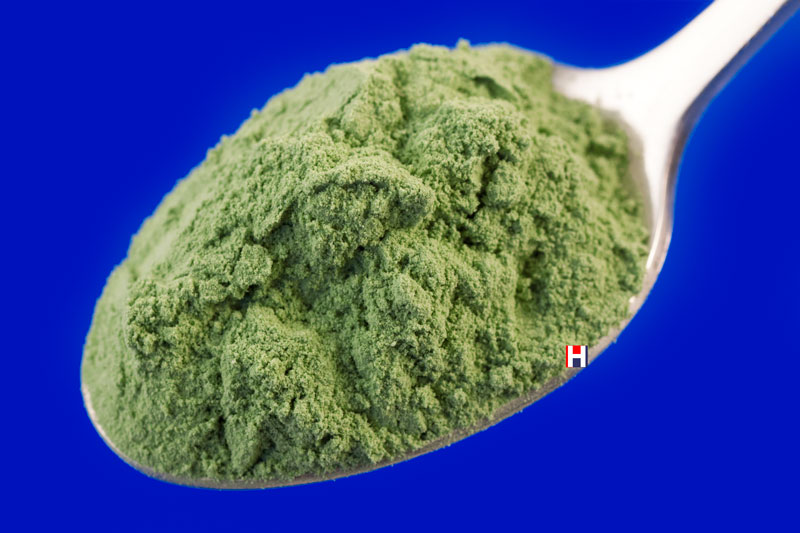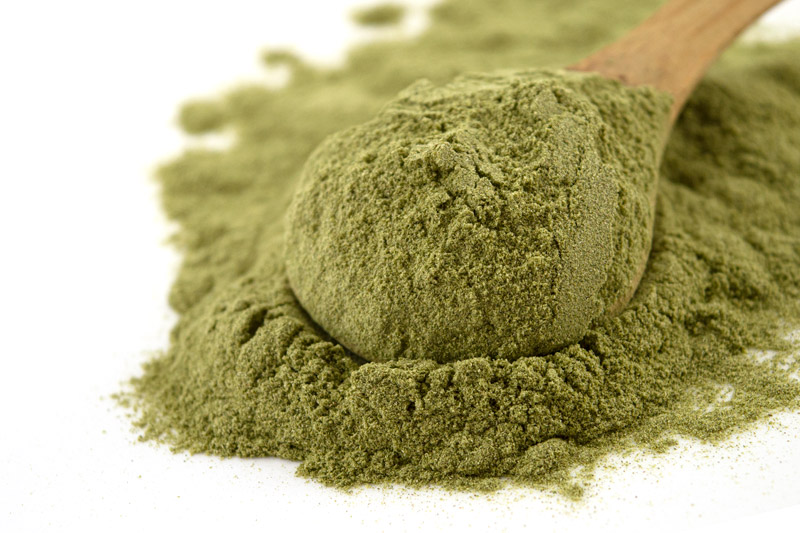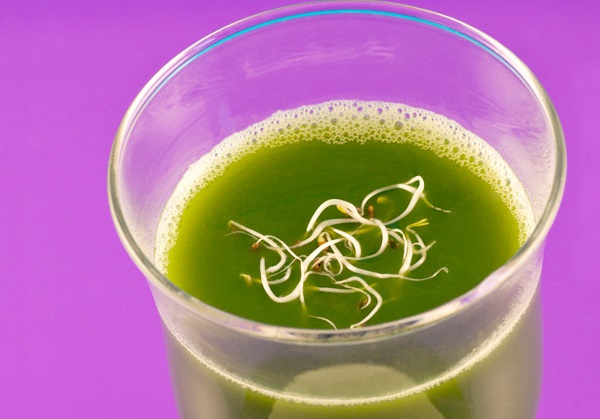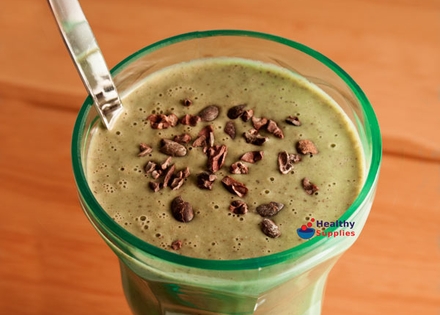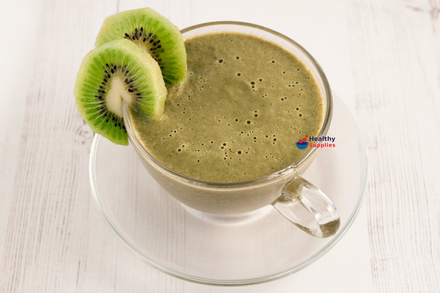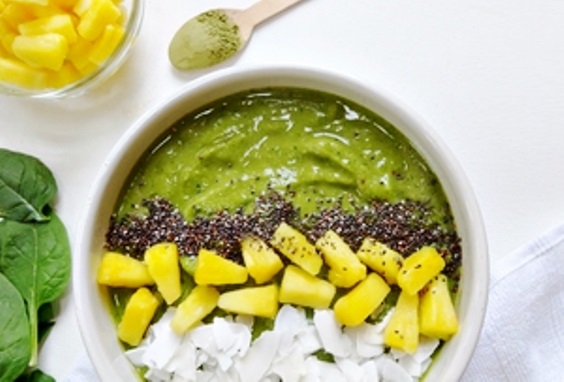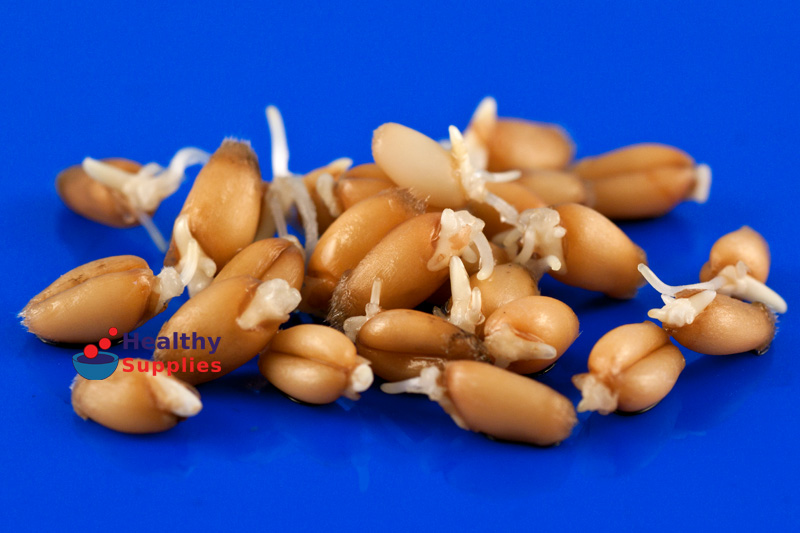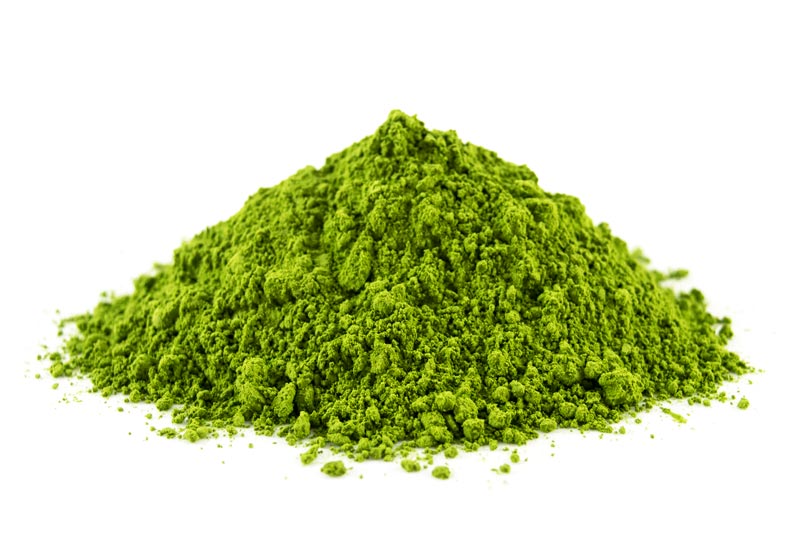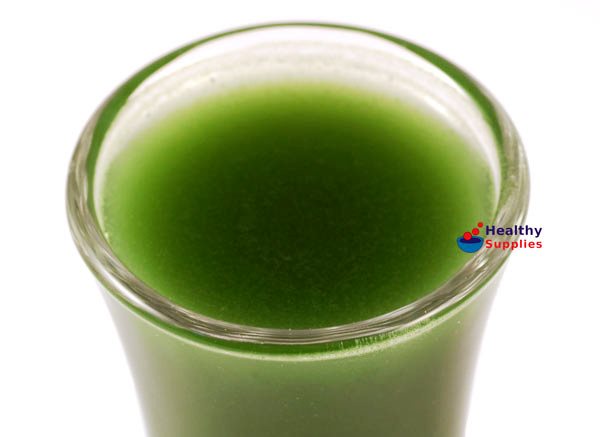Wheatgrass – 8 reasons why you should include it as part of your diet
Wheatgrass is usually the number one go-to superfood for anyone setting out on a detox regime. It’s increasingly offered as a health tonic in juice bars, and you can buy it in powdered form too, either on its own or as part of a healthy blend.
The deep green colour of wheatgrass comes from the chlorophyll, a plant pigment which is made as a result of plants absorbing energy from the light of the sun. It supports the liver in removing toxins from the blood, and offers a wealth of other fantastic benefits for the human body, some of which we’ve outlined for you below…
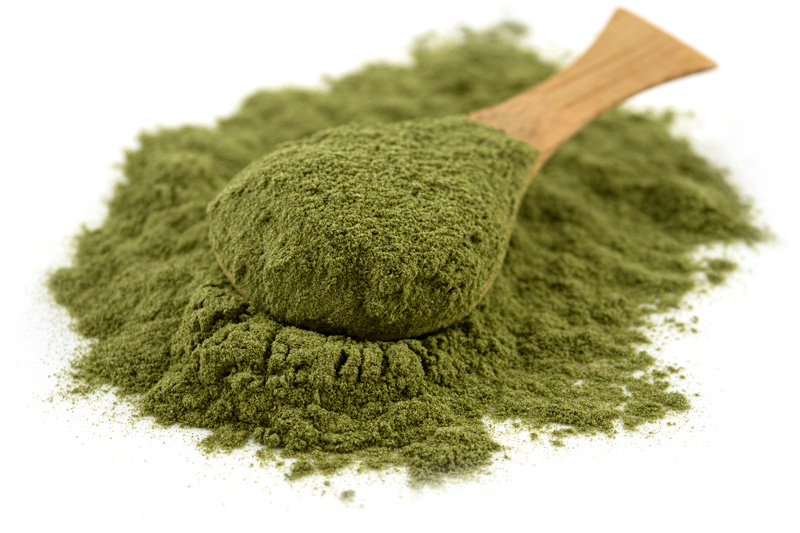
Wheatgrass can help lower cholesterol
In a series of experiments summarised in a 2010 research paper, a group of scientists found that when subjects were administered a high fat diet, Vitamin C levels dropped and oxidative stress was caused, leading to an increased risk of serious disease – but this was offset when wheatgrass was added to the mix, leading to a decrease in ‘bad’ (LDL) cholesterol and an increase in ‘good’ (HDL) cholesterol.
It can help boost your immune system
Research done by nutrition experts in India has shown that wheatgrass improves the function of our major organs, is an excellent dietary addition for people suffering from chronic illness, and slows the ageing of our cells. It’s a superb anti-inflammatory immunomodulator, and also contains the mineral selenium, which is essential for ensuring the body works at full capacity to ward off infection and biological decline.
Wheatgrass is known to regenerate liver tissue, and can be absolutely brilliant for supporting the process of detoxification following the consumption of alcohol, thereby protecting the liver from the damage associated with boozy over-indulgence. This scientific study from 2014 found that wheatgrass had unique curative properties when it came to restoring the liver after alcohol-related damage, protecting it against alcohol-induced changes in fatty acid composition while also preserving membrane integrity.
Two of the main markers of Alzheimer’s Disease are the buildup in the brain of plaque consisting mainly of Beta-Amyloid protein, and high levels of oxidative stress which destroys cells and contributes to the symptoms of dementia. Scientific research carried out in South Korea found that wheatgrass extract may have preventive and/or therapeutic potential in the management of Alzheimers Disease because it suppresses the oxidative stress caused by the Beta-Amyloid protein, and increases brain cells’ ability to defend themselves.
Consuming wheatgrass is an excellent way to control blood sugar levels, and is therefore a very useful tool for people with diabetes, due in large part to the presence of Amylase, an enzyme which regulates how much carbohydrate is absorbed by the body to convert into energy. Wheatgrass also contains excellent levels of magnesium, which boosts the responsiveness of insulin, further reducing blood sugar levels.
The chlorophyll found in wheatgrass contains huge levels of beneficial antioxidants, and It’s these high antioxidant levels that make it such a knockout weapon in the fight against arthritis. Research carried out in 2006 found that daily consumption of wheatgrass significantly improved quality of life and reduced disease severity, including stiffness, in patients with treatment-resistant rheumatoid arthritis.
Various studies have shown that wheatgrass may help kill cancer cells and reduce the development of many kinds of cancer. Furthermore, for those already afflicted with cancer, wheatgrass can go a long way to reducing symptoms associated with the negative effects of chemotherapy. One research paper from 2017, for instance, found that the therapeutic use of wheatgrass holds great promise in management of oral cancer, due in large part to chlorophyll’s similarity to haemoglobin, which means it is excellent at providing oxygen to cells for repair and regeneration.
A wealth of vitamins and minerals
Reading out a list of all the nutrients in wheatgrass would take quite a while – it’s a veritable powerhouse of nutrition, packed to the gills with high levels of Vitamins A, C, K, E and B12, as well as Thiamine, Riboflavin, Niacin, Biotin and Folic Acid. As for minerals, it’ll fill you with excellent amounts of Calcium, Magnesium, Phosphorus, Potassium, Selenium, Copper and Zinc, among many others. Add to the mix all the protein and fibre as well as more than 20 essential amino acids, and you won’t be able to deny this is one of the very most beneficial substances you can put in your body.

